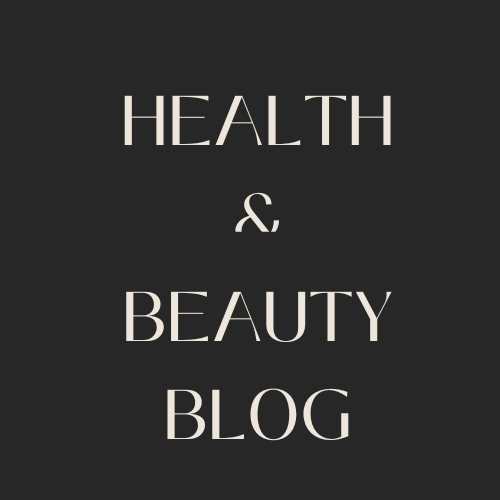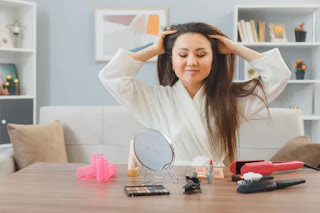Introduction:
It's a common misconception that hair loss is inevitable. While it's true that our hair goes through cycles of growth and shedding, there are a number of treatments available today that can help prevent or reverse the effects of thinning locks. Let's take a look at some of these treatments and see how they can help you get your hair back, and keep it there!
These hair treatments will help you get your hair back, and keep it there.
If you're one of the millions of people suffering from hair loss, there's good news: new treatments have been developed to help you get your hair back and keep it there. Here are four of the best ones on the market today:
Platelet-Rich Plasma (PRP) Treatment: This technique uses platelets, which are blood cells that can be extracted from your own body, then injected into your scalp to stimulate more hair growth. It's also commonly used as a treatment for scarring or acne scars.
Nutritional Supplements: While some supplements claim to help with thinning hair and baldness, others may actually cause more harm than good. Before taking any supplement for this purpose (or any other), consult with a doctor first so that they can determine whether it's safe or necessary for you individually—and even if so, how much should be taken!
Micro needling: Using special needles about half a millimeter wide (about 1/20th of an inch), micro needling will puncture holes into your skin where collagen production increases; therefore causing more growth when applied topically afterwards. This can also be combined with PRP injections to maximize results!
Scalp Exfoliation Technique: This is done using an exfoliating scrub designed specifically for use on scalps which helps remove dead skin cells while promoting healthy new ones!
PRP treatment:
Platelet-rich plasma (PRP) treatment is a relatively new process that uses your own blood to stimulate regrowth of hair. PRP is prepared by the patient's blood being spun in a centrifuge to separate red blood cells from platelet-rich plasma (PRP). The PRP can then be applied directly to the scalp, which may help stimulate existing hair follicles in order to grow new hair.
PRP treatments have been shown to be effective for women who are experiencing female pattern baldness, or androgenetic alopecia. However, they are not recommended for those with male pattern baldness because it has proven ineffective thus far.
Platelet-rich plasma (PRP) is a trending hair treatment that uses a patient's own blood to stimulate regrowth. PRP is prepared by the patient's blood being spun in a centrifuge to separate red blood cells from platelet-rich plasma (PRP). The plasma is then injected into the patient's scalp in areas where hair loss has occurred. This process can be repeated multiple times, as well as combined with other treatments like minoxidil or finasteride for an even greater effect on hair growth.
Nutritional supplements:
The best hair treatments of 2022 are the ones you can use right now. The trinity of zinc, vitamin C and folic acid is a great start. These three remedies have been shown to promote hair growth in some cases and even regrow lost hair in others. Here’s how they work:
Zinc is an essential mineral that plays a role in cell division, protein synthesis and healing wounds. It also helps regulate your body’s natural hormones—which may be important for treating alopecia areata (an autoimmune disorder that causes patchy baldness), since it involves an overproduction of certain hormones.
Vitamin C helps produce collagen—a fibrous protein found throughout the body—which keeps skin firm and elastic, among other things. Collagen also makes up much of what holds onto the cells that make up our hair follicles; when there isn’t enough vitamin C available to help build new strands of this stuff, we see thinning or loss on our scalps instead!
Folic acid (also known as vitamin B9) has been shown in multiple studies to improve scalp health by strengthening blood vessels near them which leads directly into better circulation all over even when used externally via topical application techniques such as using sprays like Rogaine Foam or Viviscal Shampoo with biotin which contains both ingredients together side effects include mild drowsiness after taking too much during first few days but goes away quickly once dosage adjusted right amount needed varies depending on individual needs so consult doctor before starting any supplement regimen!
A combination of zinc, vitamin C and folic acid may help stop hair loss. In some cases this trinity of remedies can even regrow hair that has been lost.
Zinc and vitamin C work together to encourage hair growth.
Folic acid helps with cell division, which is important for the new follicles to grow in.
A combination of these three ingredients can help you regrow hair that was once lost or damaged.
Micro needling:
"I find it most effective when used on someone who has very fine or thinning hair," says Dr. Lawler. "It's not going to work miracles on thick or coarse strands."
Micro needling takes about 30 minutes per session; you'll need about four sessions spaced about three weeks apart in order for your scalp to heal properly before moving onto another round of treatment. You should see visible results within two months—and if you're happy with how things look after those eight sessions? Your dermatologist may recommend continuing treatment every once in awhile as needed (or even indefinitely!).
This process can encourage collagen production, which increases blood flow to the scalp and follicles and encourages the growth of new hair.
Collagen is the most abundant protein in your body and it’s essential for keeping your skin, hair and nails in tip-top shape. It also helps to keep your joints healthy, so if you want to prevent arthritis from setting in later in life, getting regular collagen shots may be a good idea. Collagen production slows down with age, but it can also be reduced by stress (and who isn’t stressed these days?) or poor dieting habits like smoking cigarettes or drinking too much alcohol.
If you have thinning or damaged hair that needs healing at its roots, look into getting a collagen injection directly into the scalp area where your follicles are located. This process can encourage collagen production, which increases blood flow to the scalp and follicles and encourages the growth of new hair.
Scalp massage:
A scalp massage is an easy way to give your hair some TLC. All you need is a small amount of oil, like coconut or olive oil, and a few minutes every day. You can do it while watching TV or sitting in traffic on the way home from work—it's just important that you're focusing on massaging your scalp with your fingertips for 10 minutes every day. The best part about scalp massages? They're portable! You can do them while in the shower if you want; just use a little bit of water as lubricant instead of oil.
Massaging your scalp for 10 minutes every day can increase blood flow to your follicles, which in turn helps them produce more healthy hairs.
Massaging your scalp for 10 minutes every day can increase blood flow to your follicles, which in turn helps them produce more healthy hairs.
It's best to do this while you're lying down and wearing a warm hat.
Scalp exfoliation:
If you have dry, irritated scalps, use the former to gently remove dead skin cells and encourage healthy growth. If you tend to have oily scalps, opt for the latter as it'll get rid of excess sebum and bacteria while also stimulating your follicles in order to promote better growth. Either way, make sure that whatever product you're using has been approved by your local dermatologist or physician before applying it directly onto your scalp—and don't forget to rinse well afterward! You can do this every day if necessary; just make sure not to overdo it since both methods are mildly abrasive in nature (though less so than chemical treatments).
Exfoliating your scalp helps remove dead skin cells, sebum and bacteria from your pores. This allows more oxygen to reach the follicles and encourages better growth.
Exfoliating your scalp helps remove dead skin cells, sebum and bacteria from your pores. This allows more oxygen to reach the follicles and encourages better growth. In addition, exfoliating also increases blood flow to the scalp area, which can help prevent hair loss by improving circulation in that area.
Scalp exfoliation is easy and can be done at home using a gentle scrub or loofah pad.
Wear wigs!
Wigs are a great way to hide hair loss. Wigs can be made from synthetic hair, human hair or a combination of the two. They may be styled and colored to match your own hair so you can wear them out in public without anyone knowing that they're not real.
Wigs can be washed, styled and maintained just like your own hair—they often have realistic-looking roots that help the wig blend in with your natural hairline!
There are lots of new ways to grow your hair!
It's 2022, and we have a lot of new ways to make your hair grow. These treatments are not for everyone, but they can be a good option for some people. If you're interested in trying any of these treatments, you should talk to your doctor first.
Conclusion:
We hope this article has given you some useful insights and tips on how to care for your hair. If you have any questions or comments, please feel free to let us know in the comment section below.

 :
:





Post a Comment
If you have any query. Please let me know